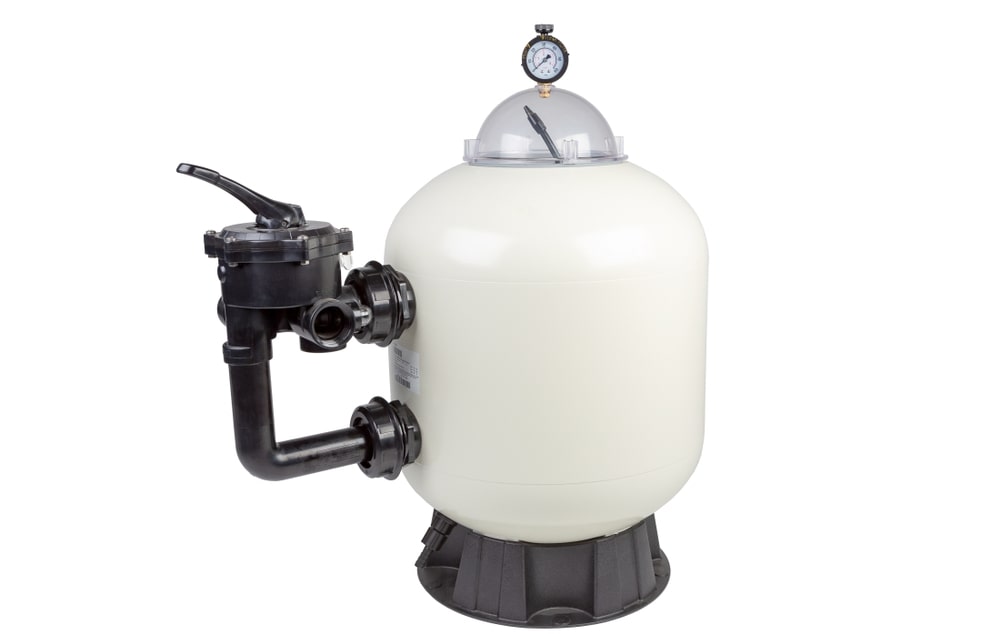Table of Contents
Principle
The principle of the Pressure Sand filter is a type is depth filtration and the mechanism is impingement and entanglement of solids on account of low-pressure differential. The slurry enters the sand bed and the clear liquid is collected from the bottom outlet.
Construction of Pressure Sand filter
The construction of a standard pressure sand filter is given in Figure 1. It is a closed system and consists of a cylindrical tank with a bottom containing a number of brass strainers. These are mounted on a false bottom or connected to a manifold embedded in concrete. The strainers have narrow slots sawed in them. A layer of moderately coarse gravel is placed on the top. Above this, a 6 to 12 m depth sand layer is placed, which acts as a filter medium. Baffles are arranged at the point of the feed inlet, in order to prevent the disturbance of sand by the direct stream. Provision is made at the bottom for collecting the filtrate.

Working
The feed is introduced from the top at pressure through the baffle. The feed is passed smoothly at a uniform rate onto the sand medium. Filtration is achieved by straining mechanism through the sand medium. Then, the feed is passed through a strainer, so that further filtration takes place and particles are retained. The precipitate is discarded. The filtrate is collected from the bottom.
When the precipitate clogs the sand (indicated by reduced filtration rate), backwashing permits the regeneration of the filter bed. During this operation, water moves up through the sand bed and moves out from the inlet.
Uses of Pressure Sand filter
A pressure sand filter is used for filtration of boiler feed or water for similar purposes. Sand filters are mainly used when the solids are little and a large volume of feed is to be handled. Such operations can be achieved at minimum cost. Pressure sand filters are applicable only to the separation of precipitates that can be removed from the sand.
Disadvantages:
- Feed containing precipitates that are gelatinous or form a coat on the sand cannot be filtered through the sand filter, because backwashing does not permit regeneration.
- If the feed contains finely divided solids, a sand filter cannot be used for filtration.
- A sand filter cannot remove bacteria. In such cases. coagulants such as ferrous sulphate or aluminium sulphate, are added to the feed before filtration. The alkalinity of normal water permits the formation of flocs. These adsorb finely divided suspended matter and even bacteria. The flocs through fine are removed by the sand filter.
Variants: In an open type sand filter, large concrete boxes are used. These filters use gravity filtration (hydrostatic head filter). This filter and accessories are extremely simple and the costs are low. The filtration rate is low and labour charges are high. This filter occupies more floor space.
Make sure you also check our other amazing Article on : Centrifugation
